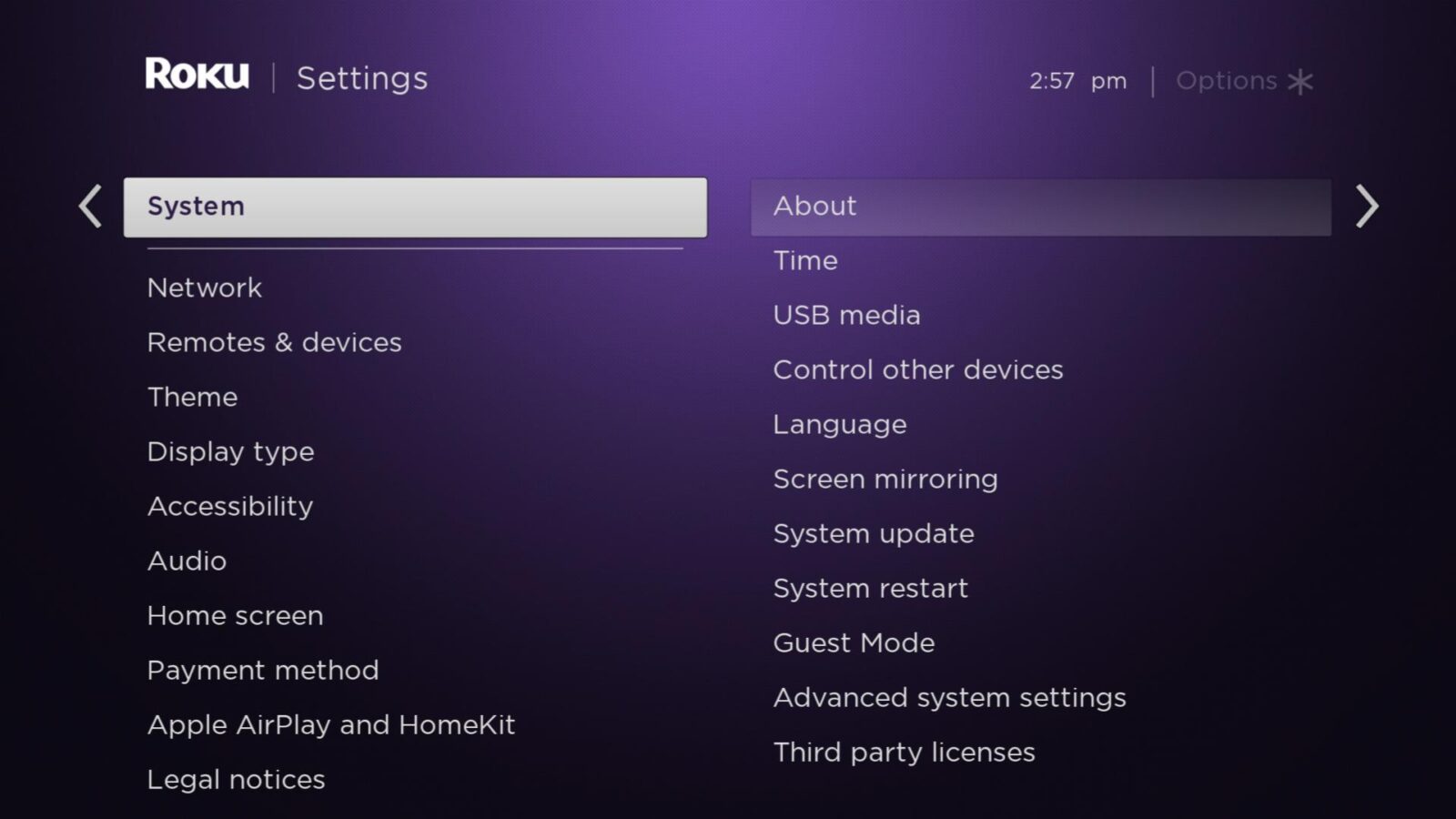Roku Restart: A Quick Guide

The Roku streaming platform has revolutionized the way we access and enjoy entertainment content. With a wide range of streaming services and channels, Roku devices have become an integral part of many households. However, like any electronic device, Roku may occasionally encounter issues or require a restart to optimize performance. In this comprehensive guide, we will explore the process of restarting a Roku device, providing you with step-by-step instructions and valuable insights to ensure a smooth and efficient experience.
Understanding the Need for a Roku Restart

While Roku devices are known for their reliability, various factors can contribute to the need for a restart. From minor glitches and performance lags to more significant issues like app crashes or streaming quality problems, a restart can often resolve these concerns. Additionally, regular restarts can help maintain the overall health and longevity of your Roku device, ensuring it operates at its best.
Preparing for a Roku Restart

Before initiating a restart, it’s essential to ensure you have the necessary tools and a clear understanding of the process. Here’s what you’ll need and some preliminary steps to consider:
- Roku Remote: Ensure your Roku remote is fully charged or has fresh batteries. A functioning remote is crucial for navigating through the restart process.
- Stable Internet Connection: Verify that your Roku device is connected to a stable and reliable internet network. A solid internet connection is vital for accessing streaming services and ensuring a smooth restart.
- Power Source: Ensure your Roku device is properly plugged into a power outlet or surge protector. A steady power supply is necessary to complete the restart process.
- Note Down Important Settings: If you’ve customized your Roku device with specific settings, such as network preferences or personalized channel layouts, make a note of these configurations. This will help you quickly restore any personalized settings after the restart.
Performing a Soft Restart
A soft restart, also known as a power cycle, is a straightforward process that involves temporarily cutting power to your Roku device and then restoring it. Here’s how to perform a soft restart:
- Locate the Power Button: On most Roku devices, you’ll find a physical power button on the back or side of the device. Identify the power button and ensure it’s accessible.
- Power Off: Press and hold the power button for approximately 5 seconds. This will initiate the power-off process, and you’ll see the Roku logo disappear from the screen.
- Wait for a Few Moments: Allow your Roku device to completely power down. This usually takes a few seconds, but it’s essential to ensure the device is fully off before proceeding.
- Restore Power: Once the device has powered off, press the power button again to restore power. The Roku logo will reappear on the screen, indicating that the device is powering up.
- Wait for Boot-Up: Give your Roku device a few moments to boot up and load the home screen. During this process, you may see a progress bar or a spinning icon indicating that the device is initializing.
- Check for Stability: Once the home screen appears, navigate through the menus and access a few streaming services to ensure everything is functioning properly. Check for any noticeable improvements or issues.
Common Soft Restart Fixes
A soft restart can resolve a variety of minor issues, including:
- App Crashes: If an app consistently crashes or freezes, a soft restart can often resolve the problem.
- Streaming Quality Issues: Problems with streaming quality, such as buffering or pixelation, can sometimes be improved with a soft restart.
- Minor Glitches: Small glitches or unexpected behavior may be resolved by a simple power cycle.
- Network Connection Issues: If your Roku device is experiencing connectivity problems, a soft restart can help reestablish a stable connection.
Advanced: Hard Restart
In some cases, a soft restart may not be sufficient to resolve more complex issues. In such situations, a hard restart, also known as a factory reset, may be necessary. A hard restart will return your Roku device to its original factory settings, erasing all personalized configurations and data. It’s a more drastic measure but can effectively resolve persistent problems.
When to Consider a Hard Restart
Consider performing a hard restart if you’re experiencing any of the following issues, which are not resolved by a soft restart:
- Persistent Streaming Problems: If you consistently encounter issues with streaming quality, such as frequent buffering or poor video playback, a hard restart may be necessary.
- App Installation or Update Issues: If you’re unable to install new apps or update existing ones, a hard restart can help resolve these problems.
- System Stability Concerns: If your Roku device is frequently crashing, freezing, or encountering frequent errors, a hard restart can help restore stability.
- Network Connectivity Problems: If your Roku device fails to connect to the internet or experiences frequent disconnections, a hard restart can help reestablish a stable network connection.
Performing a Hard Restart
Before initiating a hard restart, ensure you have the necessary backups and a clear understanding of the process. Here’s how to perform a hard restart:
- Access the Settings Menu: Navigate to the “Settings” menu on your Roku device. This can usually be found by selecting the gear icon or the “Settings” option from the main menu.
- Locate the System Settings: Within the settings menu, locate and select the “System” or “System Settings” option. This will provide access to advanced system configurations.
- Initiate Factory Reset: Within the system settings, you’ll find an option for “Factory Reset.” Select this option to initiate the hard restart process.
- Confirm Reset: You’ll be prompted to confirm the factory reset. Ensure you understand the implications of this action, as it will erase all personalized settings and data. If you’re certain, proceed with the reset.
- Wait for Completion: The hard restart process may take a few minutes to complete. During this time, your Roku device will perform a full reset and restart. Be patient and avoid interrupting the process.
- Reconfigure Settings: Once the hard restart is complete, your Roku device will be in its default factory state. You’ll need to reconfigure your settings, including network connections and personalized channel layouts.
Troubleshooting and Tips

While performing a restart is relatively straightforward, here are some additional tips and troubleshooting steps to consider:
- Power Source Stability: Ensure your Roku device is connected to a reliable power source. Power fluctuations or unstable connections can lead to unexpected behavior or issues.
- Network Connection: Verify that your internet connection is stable and provides sufficient bandwidth for streaming. Poor internet connectivity can impact the performance of your Roku device.
- Check for Updates: Regularly check for software updates for your Roku device. Software updates often include performance enhancements and bug fixes that can improve overall stability.
- Restart Your Router: If you’re experiencing persistent network connectivity issues, try restarting your router. Power cycling your router can help resolve network-related problems.
- Contact Roku Support: If you encounter complex issues or have further questions, don’t hesitate to reach out to Roku’s customer support. They can provide additional guidance and assistance tailored to your specific device and situation.
Frequently Asked Questions
How often should I restart my Roku device?
+
While there is no set frequency, it’s generally recommended to perform a soft restart periodically, such as once every few weeks. Regular restarts can help maintain optimal performance and prevent minor issues from accumulating.
Can I perform a restart without a remote?
+
Yes, if you don’t have a functioning remote, you can often power cycle your Roku device by unplugging it from the power source for a few seconds and then plugging it back in. This will initiate a soft restart.
What if the soft restart doesn’t resolve my issue?
+
If a soft restart doesn’t provide a solution, consider performing a hard restart (factory reset). However, ensure you have backups of your personalized settings and data before proceeding.
Can I schedule automatic restarts for my Roku device?
+
Currently, Roku devices do not offer a built-in feature for scheduling automatic restarts. However, you can create a reminder or use a smart home device to automate the restart process.
Are there any risks associated with performing a hard restart?
+
A hard restart will erase all personalized settings and data. Ensure you have backups or notes of your configurations before proceeding. Additionally, be cautious when performing a hard restart, as it should only be done when necessary to avoid unnecessary data loss.
By following this comprehensive guide, you’ll be equipped with the knowledge and skills to effectively perform a Roku restart, ensuring your streaming experience remains smooth and enjoyable. Remember to regularly maintain your Roku device and address any issues promptly to maximize its performance and longevity.



